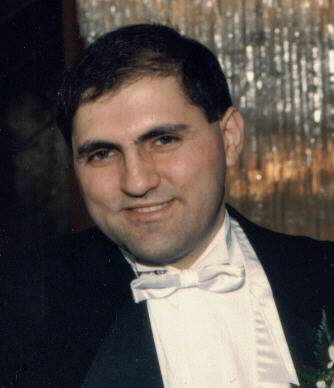| Innovative Vascular Health Group | ||||||||||
| CREDENTIALS
VARICOSE VEIN TREATMENT OPTIONS DIALYSIS ACCESS MANAGEMENT AND TREATMENT CAROTID ARTERY DISEASE TREATMENT PERIPHERAL VASCULAR DISEASE MANAGEMENT (PVD) ABDOMINAL AORTIC ANEURYSM TREATMENT MESENTERIC ARTERY DISEASE TREATMENT DEEP VEIN THROMBOSIS TREATMENT
|
.
Alfonso
Ciervo, MD, FACS Hazlet Office Eatontown Office 966 Hwy 36 142 Hwy 35, Suite 106 Hazlet NJ 07730 Eatontown NJ 07724
Office Phone: (732) 847-3461 Office
Fax:
(732) 284-4272
What is an aortic aneurysm?An aneurysm is an area of a localized widening (dilation) of a blood vessel. The main artery that comes off the heart and brings blood to the body is called the aorta. Above the diaphragm (a muscle that separates the lungs and abdomen) is called the thoracic aorta and below the diaphragm is called the abdominal aorta. The abdominal aorta ends where it splits to form the two iliac arteries that go to the legs. Where do aortic aneurysms tend to develop?Aortic aneurysms can develop anywhere along the length of the aorta. The majority, however, are located along the abdominal aorta. Most (about 90%) of abdominal aneurysms are located below the level of the renal arteries, the vessels that leave the aorta to go to the kidneys. About two-thirds of abdominal aneurysms are not limited to just the aorta but extend from the aorta into one or both of the iliac arteries. What shape are most aortic aneurysms?Most aortic aneurysms involves widening all around the circumference of the aorta (called a fusiform aneurysm).Saccular aneurysms just involve a portion of the aortic wall with a localized out pocketing. What's inside an aortic aneurysm?The inside walls of aneurysms are often lined with a laminated blood clot that is layered on top of each other. Who is most likely to have an abdominal aortic aneurysm?Aortic aneurysms are most common after 60 years of age. Males are five times more likely than females to be affected. Approximately 5% of men over age 60 develop an abdominal aortic aneurysm. What are risk factors for aortic aneurysms?
What is the most common cause of aortic aneurysms?Arteriosclerosis (hardening of the arteries) is directly or indirectly the causes at least 80% of aortic aneurysms. The arteriosclerosis can weaken the aortic wall and the pressure of the blood being pumped through the aorta causes expansion at the site of weakness. What are other causes of aortic aneurysms?
What are the symptoms of an abdominal aortic aneurysm?Most abdominal aortic aneurysms produce no symptoms (they are asymptomatic). They are often incidentally discovered when abdominal ultrasound and/or CT scan studies are ordered for other conditions. When they produce symptoms, the most common symptom is abdominal and/or back pain. The pain is usually intense, sometimes intermittent, and associated with a pulsatile abdominal mass. Ruptured abdominal aortic aneurysm usually cause shock (severe low blood pressure due to massive blood loss) and dealth. What tests help in the diagnosis of an abdominal aortic aneurysm?
What is the natural history of abdominal aortic aneurysms?Any aneurysm poses a risk of rupture, but that risk is dependent on the aneurysm size and the speed of expansion (>0.5 cm/year).
What are the complications with an abdominal aortic aneurysm?Rupture is a feared problem. Rupture of an abdominal aneurysm is a catastrophe. It is highly lethal and is usually preceded by excruciating pain in the lower abdomen and back, with tenderness of the aneurysm. Rupture of an abdominal aneurysm causes profuse bleeding and leads to shock. Death may rapidly follow. Half of all persons with untreated abdominal aortic aneurysms die of rupture within five years. Abdominal aortic aneurysms are the 13th leading cause of death in the U.S. Peripheral embolization of clot within the aneurysm can occur when a piece of clot comes loose and travels further out in the arterial system. This clot fragment can lodge in a smaller artery and block the flow of blood. Infection of aneurysms can occur from turbulent blood flow from the rough inner surface of the affected aorta. How are abdominal aortic aneurysms repaired?Endovascular Repair: Open Surgical Repair The goal of surgical treatment of abdominal aortic aneurysm is to prevent aneurysm rupture. Traditionally, repair of aortic aneurysms has been surgical. The operation consists of opening the abdomen, finding the aorta and removing (excising) the aneurysm. A synthetic Dacron tube that replaces the removed piece of aorta is sewn into place. A less invasive procedure for aortic aneurysm is endovascular surgery. This minimally invasive procedure that allows the grafts (stent) to be guided within the blood vessel itself to the site of the aneurysm without the need to cut open the abdomen. Not all aneurysms can be fixed in this manner and there may not be a long-term benefit to this type of surgery. Though the post-operative course is shorter, there is a need for closer follow-up and testing.
To repair the aneurysm endovascularly, two small incisions are made in the groin and through these incisions, the stents are inserted. Below is are clips af pieces of the procedure.
Main body partially opened Main body fully opened Stent graft completely deployed What is done if an abdominal aortic aneurysm threatens to rupture?Threatened rupture of abdominal aneurysms is a surgical emergency. The operative risk for a ruptured aneurysm is about 50%. If kidney failure occurs after surgery, the prognosis (outlook) is particularly poor. What is the medical management (non-surgical management) of abdominal aortic aneurysm?For patients who are not surgical candidates (for example for patients with aneurysm smaller than 5 cm); medical treatment to prevent aneurysm expansion and rupture include:
How can you reach us? |
|||||||||

